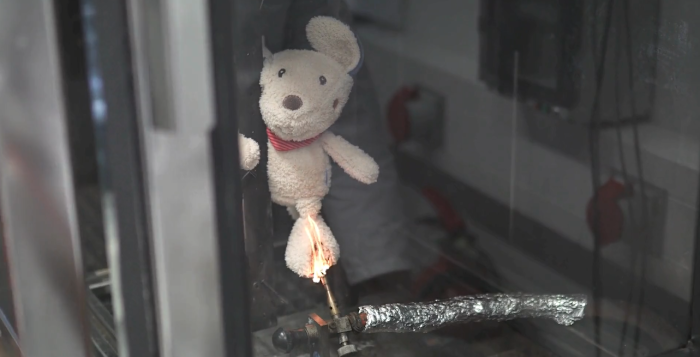
Textile Standards and Regulations in the United States: A Guide to Compliance
In the realm of manufacturing, textile testing stands as a vital tool ensuring quality, safety, and adherence to regulations. For those involved in the production of textile goods, be it mills, manufacturers, importers, or retailers, understanding and complying with the stringent textile regulations and recognized industry standards in the United States is critical. This article serves as a straightforward guide, dissecting the core aspects of textile compliance, focused on manufacturers aiming to align their products with US textile standards.
The Importance of Compliance
The existence of textile standards and regulations in the US is rooted in the need to safeguard consumer safety, maintain textile product quality, and ensure fair trade practices. These standards provide a common ground for manufacturers to adhere to, resulting in products that are reliable, safe, and consistent. Compliance not only benefits businesses by enhancing customer trust but also contributes to the overall integrity of the industry.
A Brief History of Textile Regulations in the US
The existence of textile regulations in the US traces back to the late 19th century, a time when concerns over product quality and deceptive practices were mounting. The first significant step was the establishment of the Wool Products Labeling Act in 1939, marking the foundation of mandatory labeling requirements for textile products. Over time, the industry witnessed the introduction of various laws and regulations that expanded the scope of standards to encompass safety, flammability, labeling, and more.
Key Textile Standards and Regulations in the US
There are a variety of regulations and standards that apply to textile products, particularly clothing, in the United States. Here is an overview.
Colorfastness and Dimensional Stability: Standards like American Association of Textile Chemists and Colorists (AATCC) standards, including AATCC 8, AATCC 16.3, and AATCC 135, address colorfastness and dimensional changes after laundering, exposure to light, and other treatments, ensuring that products meet customer expectations and retain their appearance and size throughout their use.
Flammability Standards: The US has stringent flammability regulations, such as 16 CFR 1610 for general clothing textiles and 16 CFR 1615 & 1616 for children's sleepwear. These regulations ensure that textile products meet specific flammability criteria, minimizing the risk of fire-related injuries. ASTM voluntary standards such as ASTM D1230 for Flammability of Apparel Textiles and ASTM D 4151 for Flammability of Blankets set standard test methods for evaluating flammability characteristics of other textile products sold in the US.
Care Labeling Requirements: Codified under 16 CFR 423, this regulation mandates the inclusion of care instructions on wearing apparel labels. Clear care labels guide consumers in properly maintaining and prolonging the lifespan of their garments.
Fiber Content Labeling: Governed by 16 CFR 303, this regulation ensures transparency in product labeling by mandating accurate representation of the textile's fiber composition. This empowers consumers to make informed choices and helps protect them from deceptive labeling practices.
Chemical Testing: The US emphasizes chemical safety through laws like the Consumer Product Safety Improvement Act (CPSIA). This covers aspects such as lead content in surface coatings and substrates in children’s products. Additionally, at the state level, chemicals of concern in textile products are addressed. State legislation includes California Proposition 65, various state laws requiring reporting of chemicals of high concern to children, and many state level laws addressing PFAS in consumer products, to name a few.
Navigating Textile Product Compliance
Manufacturers striving for quality and for compliance must consider several factors. Firstly, understanding the intended use of the textile product is vital. Products may have different requirements based on their function and target consumer. Secondly, the target market influences the applicable standards, as regulations may differ among states and municipalities. Lastly, staying updated on evolving regulations is crucial to avoid compliance pitfalls.
To navigate the intricacies of US textile regulations and standards, many manufacturers opt to collaborate with third-party experts like QIMA. We assist by staying up-to-date with regulations and conducting necessary tests to help you ensure that your textile products align with the established standards and industry best practices. This approach not only saves time but also provides you with the confidence that your products meet or surpass the stipulated requirements.
We offer a comprehensive suite of inspection and textile testing services to ensure compliance and product excellence. With a network of accredited testing labs and a team of seasoned experts, QIMA empowers manufacturers to navigate the intricate realm of US textile standards with confidence and precision.
More Resources
QIMA Textile Testing - Learn more about how QIMA textile testing services help you ensure safety and compliance.
QIMA Apparel Testing - Learn how QIMA’s textile testing services ensure that your garments and apparel meet consumer safety standards and regulatory requirements no matter where your products are sold.
Following the Fiber: Physical Testing for Textiles at Every Step - Physical testing for textiles is not a one-time event, read here to learn more about how textile testing improves product quality at every step.
Related Articles


